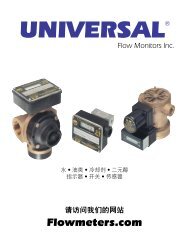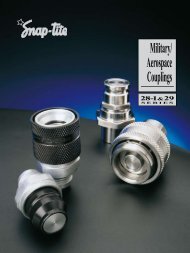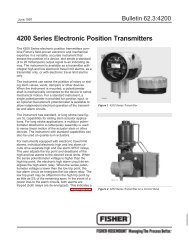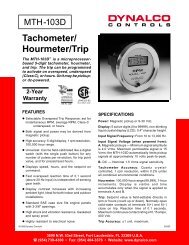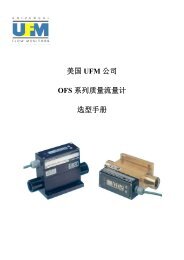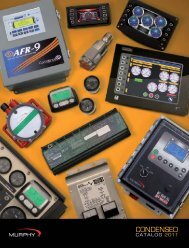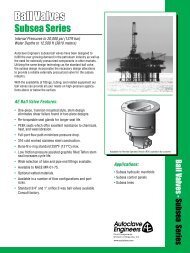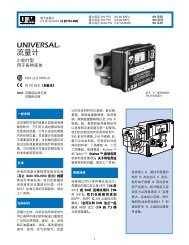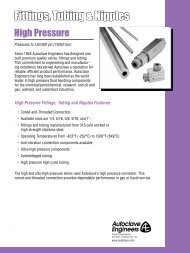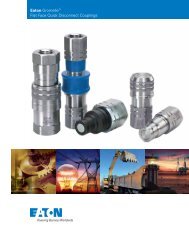Pressure
Pressure - 信德迈科技
Pressure - 信德迈科技
- No tags were found...
Create successful ePaper yourself
Turn your PDF publications into a flip-book with our unique Google optimized e-Paper software.
<strong>Pressure</strong> switches<br />
Mechanical pressure switches<br />
43<br />
S2 type series<br />
Examples of use for two-stage pressure switches<br />
<strong>Pressure</strong> monitoring and controlling can be greatly simplified by using pressure monitors with two<br />
built-in microswitches which can be made to operate one after the other under rising or falling pressure.<br />
For example, minimum and maximum pressure monitoring can be achieved with only one pressure<br />
switch, doing away with the need for a second pressure switch (including the cost of installation).<br />
Step switching, e.g. pressure-dependent control of a two-stage pump, is of course also possible using<br />
this special series.<br />
For pressure-dependent control<br />
of automatic expansion valves<br />
and pressure holding devices<br />
Example 1:<br />
Requirement<br />
<strong>Pressure</strong> holding devices and automatic expansion valves usually have a gas cushion whose pressure<br />
must be kept constant within a certain range. If the pressure is too low, a compressor is switched on.<br />
If the pressure is too high, a solenoid valve must be opened to vent the gas. Between these two levels<br />
is a neutral zone, in which the compressor and the solenoid valve are at rest.<br />
Solution<br />
All pressure switches of types DCM, DNM, DNS, each with additional function ZF 217 and switching<br />
scheme A 2, are suitable. All pressureranges listed in the technical documents are possible. Example<br />
for ordering: DCM 6-217/A 2<br />
Switching function / connection scheme<br />
Switch I: With falling pressure, contact 1–2 closes (compressor on)<br />
With rising pressure, contact 1 –2 opens (compressor off)<br />
Minimum and maximum pressure<br />
monitoring in a nitrogen<br />
line<br />
Switch II:<br />
Example 2:<br />
With rising pressure, contact 2–3 closes (valve open)<br />
With falling pressure, contact 2 –3 opens (valve closed).<br />
In between there is a neutral zone in which the compressor is not switched on<br />
and the solenoid coil is not energized (off position).<br />
Requirement<br />
In a process engineering system, the pressure in a nitrogen line has to be monitored. A green signal<br />
lamp indicates that the pressure in the line is between 2.2 and 2.6 bar. If the pressure goes below 2.2<br />
bar or above 2.6 bar, the indicator lamp goes out and the system shuts down.<br />
Solution<br />
The first contact of a DCM 3–307 pressure switch with 2 microswitches opens under falling pressure<br />
at 2.2 bar; the second microswitch opens under rising pressure at 2.6 bar. If the pressure is >2.2 bar<br />
and 0.9 bar), a yellow signal lamp warns the operator that it is time to change the filter elements.<br />
If this is not done and the differential pressure rises due to further fouling (e.g. to >1.2 bar), the<br />
system must be shut down.<br />
Solution<br />
A differential pressure switch DDCM 6–307 operates under rising differential pressure (at 0.9 bar), the<br />
green control lamp goes out; at the same time the yellow lamp comes on (warning that it is time to<br />
clean the filter). If the differential pressure continues to rise (to >1.2 bar), the circuit opens via 4–6 of<br />
the second microswitch, the relay drops out and the system shuts down.




